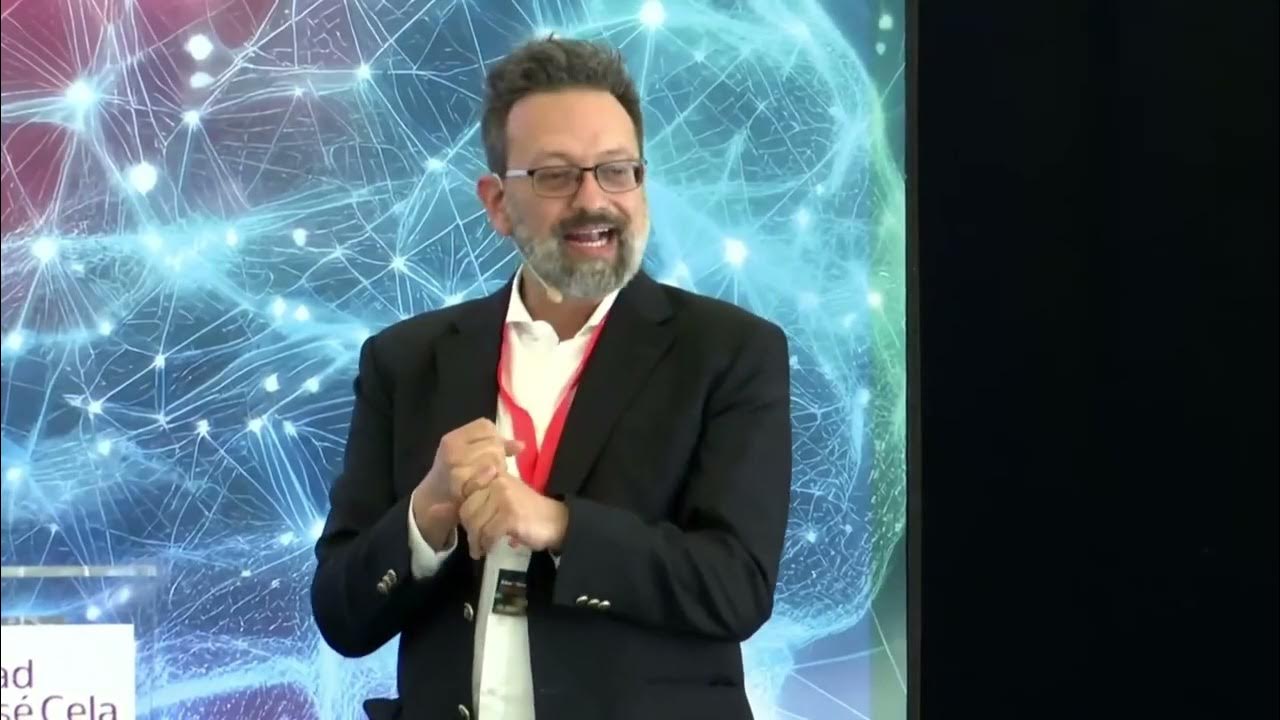AI in Schools: Cheater or Tutor? | Paul Matthews | TEDxHobart
Summary
TLDRThe speaker, Paul Matthews, discusses the potential of artificial intelligence (AI) in transforming education. Using the example of Jess, a struggling student, Matthews highlights the difficulty of providing one-on-one tutoring for every student, but argues that AI can offer personalized, feedback-rich learning environments. He introduces three strategies—text differentiation, retrieval practice, and AI-assisted feedback—that can enhance education using AI tools. Matthews emphasizes the importance of training both teachers and students to use AI effectively, ultimately aiming to improve learning outcomes and create positive ripple effects in society.
Takeaways
- 📚 Education struggles like Jess's are common in Tasmania, with students falling behind in reading, writing, and math.
- 💡 The key to helping students like Jess lies in personalized one-on-one support, but traditional methods are costly and impractical for large-scale application.
- 🤖 Artificial intelligence (AI) offers a more accessible solution for personalized learning, making it possible to help many students simultaneously.
- 📈 Research by Benjamin Bloom shows that one-on-one tutoring improves student performance by two standard deviations, or 'two sigma,' but scaling this approach is a challenge.
- 👨🏫 AI can replicate many of the benefits of one-on-one tutoring by providing tailored feedback and personalized learning experiences.
- 🧠 Three simple AI-based strategies are proposed: text differentiation, retrieval practice, and AI-driven feedback, which can be implemented to support students like Jess.
- 🔄 Text differentiation allows teachers to adjust reading materials to fit different levels of comprehension in the classroom.
- 📋 Retrieval practice helps students solidify knowledge through practice quizzes, which can now be generated quickly using AI tools.
- ✍️ AI can be used by students to receive feedback on their work, such as essays, improving their learning without replacing the teacher's role.
- 🎯 Teachers and students need proper training to effectively integrate AI into education, ensuring it supports learning rather than replacing critical educational processes.
Q & A
What is the main issue Jess is facing in her education?
-Jess struggles with basic skills like reading, writing, and math, and is falling behind despite her report card indicating she is 'approaching the standard.'
Why can't one-on-one tutoring be provided for all students like Jess?
-Providing one-on-one tutoring for every struggling student is cost-prohibitive, as it would require billions of dollars to fund full-time tutors for all students in Tasmania.
How does the speaker propose using artificial intelligence to help students like Jess?
-The speaker suggests that AI can provide personalized, one-on-one-like support for students, offering tailored feedback and educational resources to help struggling students improve without the need for a full-time tutor.
What is the 'Two Sigma Problem' described by Professor Benjamin Bloom?
-The 'Two Sigma Problem' refers to Bloom's research showing that students receiving one-on-one tutoring perform two standard deviations (or 'two sigma') better than students in a conventional classroom.
Why is the 'Two Sigma Problem' considered a problem?
-The problem is that while one-on-one tutoring yields significant educational benefits, it's not feasible to provide this level of individualized attention to all students due to resource constraints.
How does AI address the 'Two Sigma Problem'?
-AI can offer personalized, feedback-rich learning environments similar to one-on-one tutoring by providing tailored educational resources, feedback, and practice opportunities to students without requiring extensive human resources.
What are the three simple strategies that can have a significant impact on students like Jess, according to the speaker?
-The three strategies are: text differentiation (adjusting readability of texts for different levels), retrieval practice (helping students practice knowledge recall), and training students to use AI to get feedback on their work.
How does text differentiation work with AI?
-Teachers can use AI tools to adjust the complexity and length of reading materials, making them accessible to students at different reading levels. This allows all students in a classroom to engage with the material.
What is retrieval practice and how can AI enhance it?
-Retrieval practice is the process of drawing out knowledge from students through quizzing. AI can help teachers create quizzes quickly, allowing students to practice their knowledge more frequently without burdening teachers.
How can students use AI for feedback on their work?
-Students can use AI to get feedback on their writing, such as essay structure, logical coherence, and vocabulary, allowing them to improve their work without waiting for teacher feedback.
Outlines

このセクションは有料ユーザー限定です。 アクセスするには、アップグレードをお願いします。
今すぐアップグレードMindmap

このセクションは有料ユーザー限定です。 アクセスするには、アップグレードをお願いします。
今すぐアップグレードKeywords

このセクションは有料ユーザー限定です。 アクセスするには、アップグレードをお願いします。
今すぐアップグレードHighlights

このセクションは有料ユーザー限定です。 アクセスするには、アップグレードをお願いします。
今すぐアップグレードTranscripts

このセクションは有料ユーザー限定です。 アクセスするには、アップグレードをお願いします。
今すぐアップグレード関連動画をさらに表示

Why 2025 Will Be The Year of AI Agents

Empowering Everyone to Earn and Grow with AI

OpenAI CEO: “SuperIntelligence within 1000’s of Days”

How to Empower Education with Artificial Intelligence | Luca Longo | TEDxDublinInstituteofTechnology

Summit Fernando Díaz Chief Learning and Technology Office Mentu GEF 2024

Cara Mudah Optimalisasi Artificial Intelligence untuk Pembelajaran
5.0 / 5 (0 votes)
